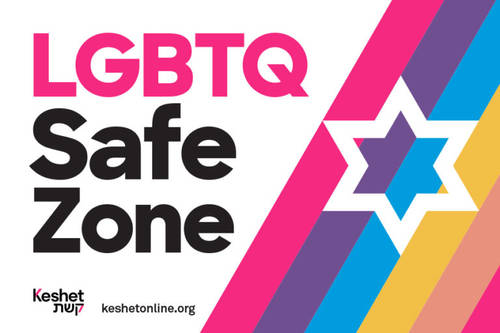The Stained Glass Windows of Temple Beth-El

The Prophetic Genius
by Dr. Myron Berman (Revised and updated by Rabbi Michael Knopf)
The artful windows along the left and right sides of the synagogue were created especially for Temple Beth-El. With one exception (The Burning Bush), each window illustrates a theme from The Prophets of the Bible. A key Hebrew word epitomizes the prophet’s principal message.
What is a prophet? In the popular imagination, a prophet is a person who can predict the future. But in the Jewish tradition, a prophet is an acute observer, spiritual critic, and moral guide of his or her society. A prophet identifies the brokenness of the world as it is and articulates a vision for the world as it could and ought to be.
The great 20th century scholar and sage Rabbi Abraham Joshua Heschel put it this way: a prophet is a person who has “sympathy with the divine pathos,” a person who loves what God loves, who is pained by what pains God, who is outraged by what outrages God, and who shares God’s vision for the world. According to the Hebrew scriptures, God loves humanity, is pained when people suffer, is outraged by injustice and oppression, and yearns for human liberation, equity, and peace. The prophet sympathizes with and gives voice to God’s feelings, agitating for society’s realignment with the godly values of love, justice, and peace.
In the Jewish tradition, many people have embodied these characteristics. In the Book of Genesis, the patriarchs and matriarchs strive to build a nation committed to walking in God’s ways. And in the remainder of the Pentateuch, Moses and his siblings Miriam and Aaron exemplify prophetic leadership.
While the Torah teaches that Moses was the greatest of all the prophets, the Jewish Bible as a whole tells of many men and women who followed in his footsteps, such as Deborah, Samuel, Nathan, and Elijah. These men and women left no literary record, but they were distinguished by their moral courage, integrity, and commitment to justice.
The period of the literary prophets begins with Amos and Hosea in the eighth century B.C.E. and concludes with Malachi in the fifth century B.C.E. During these tumultuous centuries, the two ancient Israelite kingdoms (a northern kingdom called Israel, and a southern kingdom called Judah) rose and fell, and the people of Judah were exiled to Babylonia and ultimately restored to their homeland.
While Jewish tradition teaches that the era of the literary prophets ended with Malachi, the prophetic spirit endures to this day in individuals who see the world through God’s eyes and channel God’s call for social justice. Spiritual leaders — like scholars, teachers, cantors, and rabbis — continue to inject the spirit of prophecy into contemporary religious and civic life. To offer but one example, many (including Dr. Martin Luther King, Jr.) c alled Heschel a prophet for his spiritual and moral leadership in the Civil Rights and Anti-War movements of the 1960s.
alled Heschel a prophet for his spiritual and moral leadership in the Civil Rights and Anti-War movements of the 1960s.
The stained glass windows which adorn Beth-El’s sanctuary reflect the wisdom of all the literary prophets, in addition to Elijah, their immediate precursor. Beautifully executed by noted artist A. Raymond Katz, these windows dramatically portray what Lods characterized as “the ardent belief in the spirit.” This is the essence of prophecy.
See all windows with explanations below. Scroll farther down to read about Dr. Berman and A. Raymond Katz.
About the Author
 Dr. Myron Berman served as Rabbi of Temple Beth-El from 1965-1993, where he was a strong advocate of interfaith cooperation and racial harmony. He was also a historian whose many books and essays chronicle Richmond’s Jewish community.
Dr. Myron Berman served as Rabbi of Temple Beth-El from 1965-1993, where he was a strong advocate of interfaith cooperation and racial harmony. He was also a historian whose many books and essays chronicle Richmond’s Jewish community.
Upon his retirement from Temple Beth-El, Dr. Berman enrolled at the University of Richmond School of Law and received a law degree at the age of 65. He subsequently practiced law in Northern Virginia for 16 years, advocating for abused and less-fortunate children. Dr. Berman’s many works include the books The Last of the Jews? and Richmond’s Jewry, 1769-1976: Shabbat in Shockoe.
Source: The Richmond Times Dispatch
About the Artist
(compiled and edited by Krista Fidlow)
A. Raymond Katz got his start in 1909 as a Jewish Hungarian immigrant studying art first in New York, then Chicago. He supported himself by designing posters for the First World War. Eventually this skill took him to California, where he became Director of the Poster Department at Paramount Pictures.
Early in his career, Katz explored the creative possibilities in the characters of the Hebrew alphabet. He developed aesthetic and philosophical interpretations of each letter, becoming a pioneer in the field of Hebraic art. Aside from the artistic Hebrew letters in the windows, note the use of Hebrew letters in Katz’s woodcut Moses and the Burning Bush (pictured at right), where you’ll find a letter on Moses’ head, one atop his staff, and one in the fire.
During the Depression, Frank Lloyd Wright urged Katz to become a muralist. He was one of eleven artists chosen to create murals for the 1933 Century of Progress World’s Fair in Chicago, where his  enormous secular work, O.K., was installed along with a series of murals addressing Jewish themes in the Hall of Religions. He won Best Poster for the Chicago World’s Fair in 1934 (pictured at right).
enormous secular work, O.K., was installed along with a series of murals addressing Jewish themes in the Hall of Religions. He won Best Poster for the Chicago World’s Fair in 1934 (pictured at right).
In 1936, Katz was commissioned to paint murals representing the Ten Commandments for the Loop Synagogue in Chicago. The murals are now permanently installed in the Jewish People’s Institute on Chicago’s West Side.
Many of Katz’s countless works are part of several museum collections today, including those of the Art Institute of Chicago, Corcoran Gallery of Art in Washington, D.C., and the Jewish Museum in New York City. His murals, bas-reliefs and stained glass designs adorn more than 200 synagogues in the United States.
Sources: ChicagoModern.org, Rogallery.com





